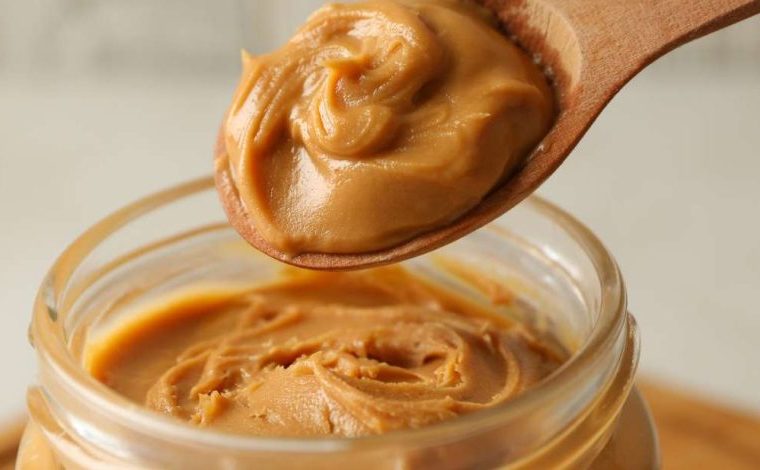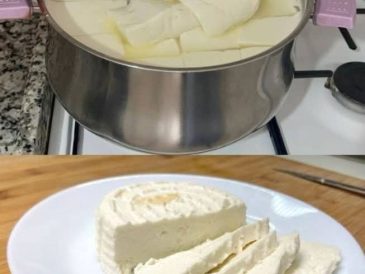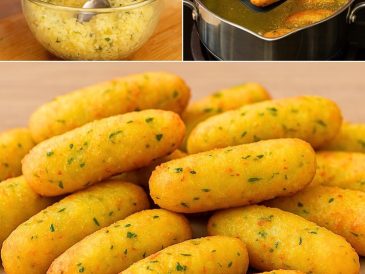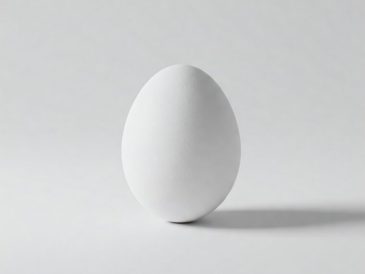Step 3: Adjust the texture
Continue blending until you reach the texture you like. For smooth peanut butter, keep blending for about five to seven minutes until it becomes creamy. If you prefer crunchy peanut butter, set aside a few tablespoons of crushed peanuts before blending, then stir them back into the smooth butter at the end.
Step 4: Add optional ingredients
Now you can add salt, honey, or a bit of oil if you want a smoother and richer flavor. Blend again for another minute until everything mixes well. Taste your peanut butter and adjust as needed. You can make it sweeter or saltier according to your choice.
Step 5: Store it properly
Transfer your peanut butter into a clean glass jar or airtight container. Close it tightly and store it in the refrigerator for up to two months. If you prefer to keep it at room temperature, make sure to use it within three weeks and always use a clean spoon to take it out. The natural oil may separate over time, so just stir it before use.
That is all it takes. Within a few minutes, you will have a fresh and natural spread ready to enjoy on toast, fruits, or in your favorite recipes.
Why This Recipe Is Special
This homemade peanut butter recipe is special because it is natural, healthy, and delicious. It contains only peanuts and maybe a small touch of honey or salt. Unlike many commercial brands, it does not contain palm oil, artificial preservatives, or refined sugar. It is pure goodness in its simplest form.
Peanut butter is also an excellent source of nutrition. It is packed with protein that helps build muscles and keeps you feeling full for longer. The healthy fats in peanuts are good for your heart and can help lower bad cholesterol levels when eaten in moderation. It also contains vitamins like vitamin E, B3, and B6, along with minerals such as magnesium and potassium. These nutrients play an important role in keeping your body strong and energized.
Another reason this recipe is special is its flexibility. You can customize it any way you like. Add cocoa powder for a chocolate flavor, cinnamon for warmth, or even a pinch of chili powder for a spicy twist. The possibilities are endless. Homemade peanut butter can be used in smoothies, sandwiches, cookies, sauces, and desserts. It is a super-food that fits every mood and every meal.
Finally, making your own peanut butter gives you a sense of satisfaction. You know exactly what you are eating, and you can trust the freshness of every spoonful. It is a perfect blend of comfort, taste, and health.
Extra Tips for Better Taste
- Use freshly roasted peanuts. Freshly roasted peanuts bring out a stronger nutty flavor and make your peanut butter taste more delicious.
- Do not rush the blending process. The longer you blend, the smoother and creamier it becomes. Be patient and let the machine do the work.
- Add a touch of natural sweetness. If you like sweet peanut butter, try adding honey or maple syrup instead of sugar. It gives a nice balance without being too heavy.
- Try different nut combinations. Mix peanuts with almonds or cashews for a richer taste and a slightly different flavor profile.
- Add spices for fun. Cinnamon, nutmeg, or a small bit of vanilla extract can make your peanut butter smell amazing and taste special.
- Make a chocolate version. Add one tablespoon of cocoa powder to create a homemade chocolate peanut butter spread that children will love.
- Store properly. Always store your peanut butter in a clean jar to keep it fresh. Stir before use if the oil separates.
- Use it creatively. Try adding a spoon of peanut butter to your oatmeal, smoothies, or pancakes. It gives extra flavor and nutrition to any meal.
Final Thoughts
Peanut butter is more than just food. It is a comfort spread that connects people to childhood memories, fitness goals, and creative cooking moments. Whether you enjoy it on a slice of warm bread or swirl it into your morning smoothie, peanut butter always brings joy. Making it at home is not only easy but also rewarding. You get a healthy, natural, and tasty spread made with love.
Every spoon of homemade peanut butter reminds you that simple things in life can bring the most pleasure. You do not need fancy ingredients or complex steps to make something amazing. All you need are good peanuts, a blender, and a bit of patience. In return, you get a creamy, rich spread that nourishes your body and satisfies your heart.
So next time you crave something delicious and wholesome, make your own peanut butter. Share it with your family, spread it on your favorite snacks, or enjoy it straight from the jar. It is a simple recipe that fits every lifestyle and makes every bite count.
Nutrition Details
| Nutrient | Per Recipe (2 cups peanuts) | Per Serving (2 tablespoons) |
|---|---|---|
| Calories | 3000 kcal | 180 kcal |
| Protein | 120 g | 8 g |
| Fat | 240 g | 16 g |
| Saturated Fat | 32 g | 2 g |
| Carbohydrates | 80 g | 5 g |
| Fiber | 30 g | 2 g |
| Sugar | 20 g (from peanuts and honey) | 1 g |
| Sodium | 200 mg (with salt) | 12 mg |
| Vitamin E | 25 mg | 1.5 mg |
| Magnesium | 600 mg | 35 mg |
| Potassium | 2500 mg | 150 mg |
These values are approximate and may vary depending on your ingredients and quantities. Peanut butter is calorie-dense but nutrient-rich, making it an excellent energy source for busy days or workouts.
Disclaimer
This article shares general information about peanut butter and how to make it at home. Everyone’s body is different, and results may vary based on diet, lifestyle, and health conditions. If you have allergies, especially to peanuts, or any medical concerns, please consult your doctor before eating peanut butter or adding it to your diet. Enjoy it in moderation as part of a balanced and healthy lifestyle.





